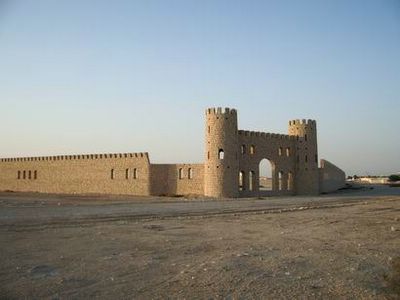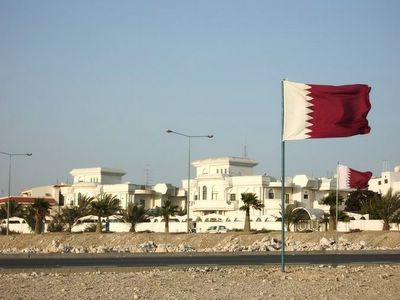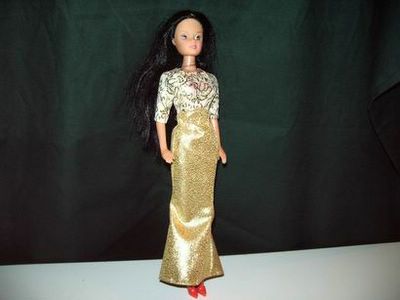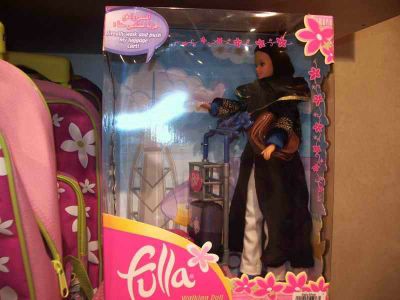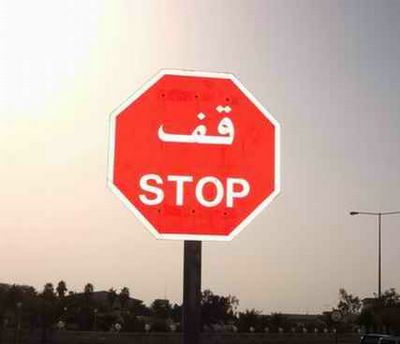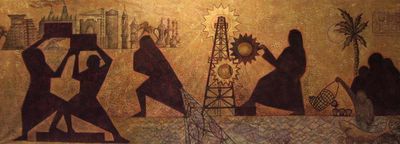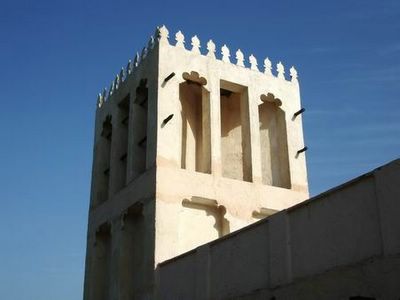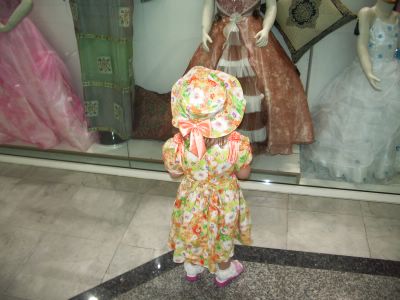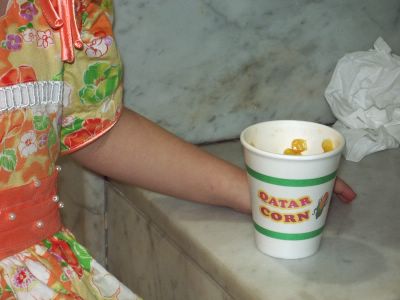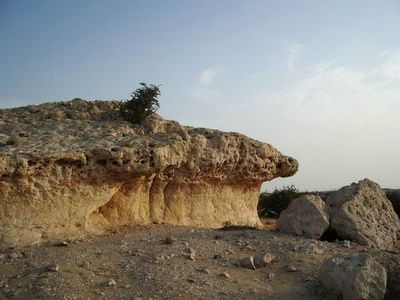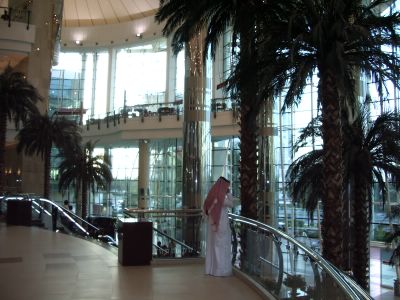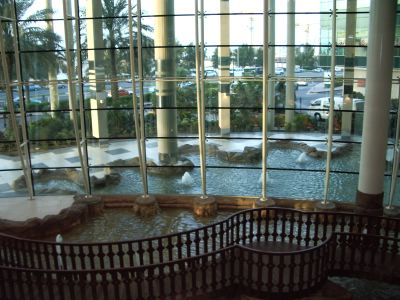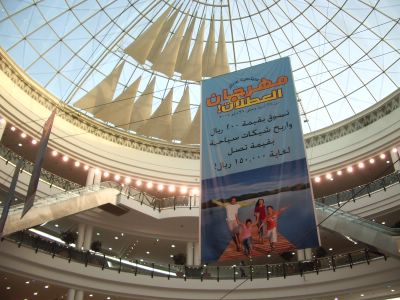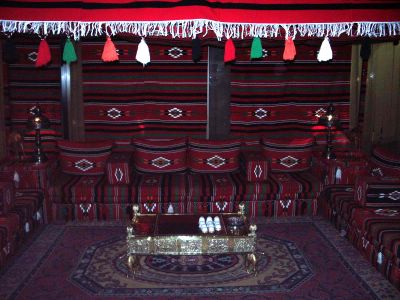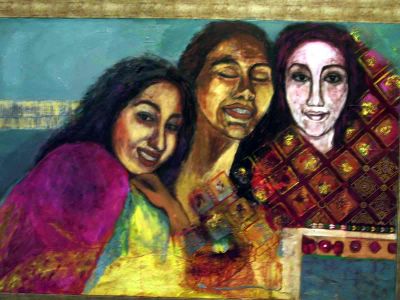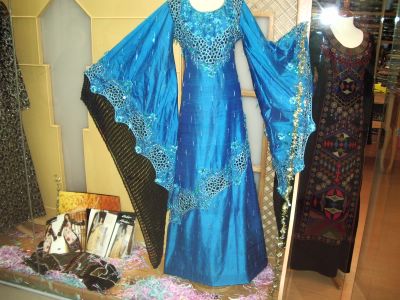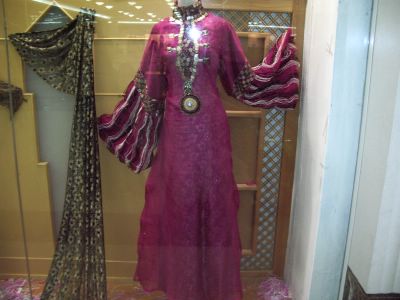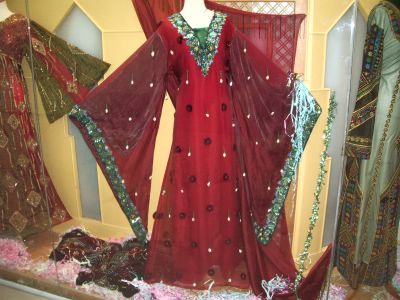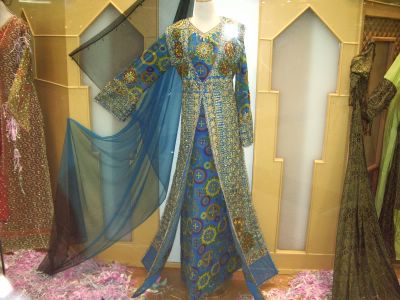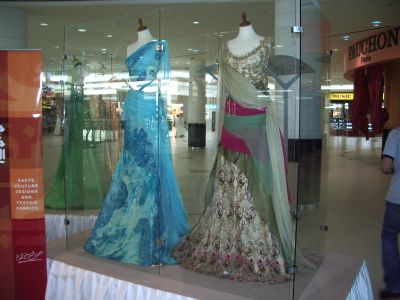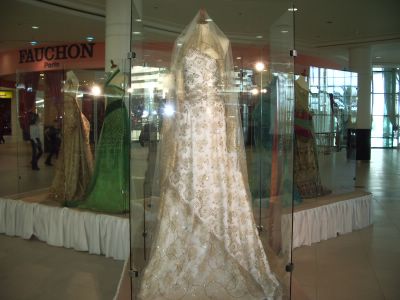Tuesday, May 31, 2005
Smart and Lazy
I have been giving some thought as to what sort of personal qualities are necessary to make a successful adjustment to the culture here. I haven’t been here all that long yet, but already I have seen several people come and go. Some in fact run away screaming in short order!
Adjusting to life in the Gulf is a big step for western ex-pats. In some ways it could be said that there is no culture on earth as foreign to a westerner as what we find here in the Gulf. Before I proceed any further, I want you to check out this --> article <-- by Bob Wallace. The article is talking about military officers and politicians, but I think the concept extends to most jobs here as well.
I won’t address the stupid/smart dichotomy, I’m not sure that it makes that much difference anyway. Smart is generally good I suppose, ...I wouldn’t know. The active/lazy dichotomy is very telling though. “Actives” will likely get chewed up and spit out quickly here in the Gulf.
The analogy is kind of strained, it’s not that being “lazy” is a virtue here per se… an aversion to work is not an advantage here by any means. I think the analogy applies if we consider “lazy” as meaning not attached to certain outcomes, flexible, and not particularly caring if things don’t work the way that we would prefer.
“Active” we could interpret as people who have a specific agenda, with certain goals and timetables that are fixed. People fitting that description should not even give the Gulf a second glance. Nothing here goes according to plan, the rules change, the priorities are often unknown, and it may well be that the plan itself is scrapped or profoundly altered at any given time …usually at the last minute.
On the other hand, huge skyscrapers are being built, the oil and gas continues to flow, the projects get financed, etc. In short, everything does get accomplished here sooner or later, just not necessarily in the way that you may have thought or preferred. The culture here is vastly different from the west, especially the corporate culture. Those flexible and patient enough to watch it and learn from it will likely do well. Those who try to re-create the western model here will probably spend many hours banging their heads against walls.
The people I have witnessed who have not adapted well usually had pre-conceived ideas of just what they were going to accomplish here. When the realities of Qatar (invariably) alter or demolish those plans, frustration sets in. A better approach for a new ex-pat here is to have no agenda at all. Just come on over, get settled in, and sit back and watch for a while. After some time passes it will become much clearer what sorts of things might work in the Gulf, and what sort won’t.
Western ex-pats get paid a lot of money here. We are paid well because Qatari industries want to know how western companies accomplish certain things… in a sense they are buying our knowledge. Whether or not they will use that knowledge is another story entirely. In fact, they may choose an approach to a problem that strikes you as not only bizarre, but actually counter-productive, then later you may come to find out that their way actually works (here) pretty well. The trick is to be available to help, and offer your expertise freely, but not be concerned if they don’t implement your solutions.
In short, if you’re coming here to change things… don’t bother, but if you’re coming here for a relaxed lifestyle and an unusual adventure …come on over!
Adjusting to life in the Gulf is a big step for western ex-pats. In some ways it could be said that there is no culture on earth as foreign to a westerner as what we find here in the Gulf. Before I proceed any further, I want you to check out this --> article <-- by Bob Wallace. The article is talking about military officers and politicians, but I think the concept extends to most jobs here as well.
I won’t address the stupid/smart dichotomy, I’m not sure that it makes that much difference anyway. Smart is generally good I suppose, ...I wouldn’t know. The active/lazy dichotomy is very telling though. “Actives” will likely get chewed up and spit out quickly here in the Gulf.
The analogy is kind of strained, it’s not that being “lazy” is a virtue here per se… an aversion to work is not an advantage here by any means. I think the analogy applies if we consider “lazy” as meaning not attached to certain outcomes, flexible, and not particularly caring if things don’t work the way that we would prefer.
“Active” we could interpret as people who have a specific agenda, with certain goals and timetables that are fixed. People fitting that description should not even give the Gulf a second glance. Nothing here goes according to plan, the rules change, the priorities are often unknown, and it may well be that the plan itself is scrapped or profoundly altered at any given time …usually at the last minute.
On the other hand, huge skyscrapers are being built, the oil and gas continues to flow, the projects get financed, etc. In short, everything does get accomplished here sooner or later, just not necessarily in the way that you may have thought or preferred. The culture here is vastly different from the west, especially the corporate culture. Those flexible and patient enough to watch it and learn from it will likely do well. Those who try to re-create the western model here will probably spend many hours banging their heads against walls.
The people I have witnessed who have not adapted well usually had pre-conceived ideas of just what they were going to accomplish here. When the realities of Qatar (invariably) alter or demolish those plans, frustration sets in. A better approach for a new ex-pat here is to have no agenda at all. Just come on over, get settled in, and sit back and watch for a while. After some time passes it will become much clearer what sorts of things might work in the Gulf, and what sort won’t.
Western ex-pats get paid a lot of money here. We are paid well because Qatari industries want to know how western companies accomplish certain things… in a sense they are buying our knowledge. Whether or not they will use that knowledge is another story entirely. In fact, they may choose an approach to a problem that strikes you as not only bizarre, but actually counter-productive, then later you may come to find out that their way actually works (here) pretty well. The trick is to be available to help, and offer your expertise freely, but not be concerned if they don’t implement your solutions.
In short, if you’re coming here to change things… don’t bother, but if you’re coming here for a relaxed lifestyle and an unusual adventure …come on over!
Sunday, May 29, 2005
Fulla Rocks
I would like to introduce you to Fulla. Fulla is the Arabian answer to Barbie.
Barbie of course is well known here, in fact she is found in practically every toy shop, …and so is Fulla.
Fulla came about as a result of dissatisfaction about Barbie, and the values, or even the mindset, that she represents. To someone living here, Barbie isn’t considered an adequate role model for little girls. She represents much of what is thought to be wrong with modern culture and society. The problem stems from completely different attitudes here and in the west regarding privacy and modesty.
In the west, a woman’s beauty is public. The public in fact demands to be able to compare, sort and judge, based upon a woman’s appearance. Women are encouraged to look “pretty”, and wear the correct clothing and accoutrements to meet with public approval. Young women are especially vulnerable to the demands put upon them by society in regards to their appearance.
In short, women in the west are required to put on a public show, as it were, and be judged thereby. Much of the clothing worn is designed to look sexy, and draw attention. I suppose that the one who draws the most attention wins. Barbie is often the first teacher that little western girls get in how to play this game.
Here privacy is the rule. A woman’s appearance is a private matter, and hers to control. A woman’s beauty isn’t a public commodity to be on display for all to see. Women here generally try to deflect attention from their appearance, rather than attract it. Modesty is reflected in the choice of dress adopted by most women in public.
To be able to see a Qatari woman without her abaya and niqab is a privilege, not a right, and it’s a carefully administered privilege at that. As a woman, it isn’t so difficult to see Qatari ladies in this way, it’s simply a matter of being invited to a social function, or to someone’s home, or possibly an everyday occurrence at work. As a man, seeing Qatari ladies without their traditional covering is fairly uncommon, although he may see them at work, or even in public (those who choose not to cover).
To someone living here, Barbie, and what she represents is shallow and superficial. Women here would rather be judged by their conduct, piety, or intelligence than by their fashion sense. To be forced to compete on that level seems rather like being a piece of meat on display.
Thus Fulla came about.
Fulla fits into all of Barbie’s clothes, although she has a full line of her own as well. Fulla likes Barbie’s clothes in fact, and frequently wears them, but when she goes out to the souqs, or to work, she makes sure to put on her abaya and hijab.
Fulla comes with a range of tastes as well. She needn’t wear an abaya, some sets include only a hijab (head covering), with the rest of the clothing being indistinguishable from modest western clothes. Other Fullas are very conservative, reflecting the varying standards and tastes in the Muslim world.
The point is, that Fulla can reflect and preserve the values of the Gulf, whereas Barbie challenges them. Both are available here, and parents may choose which one they buy for their little girls.
The best doll I have seen in this category, is a generic knock-off. She looks like Barbie, but is sold in a set where she is a physician. She comes with a labcoat over her clothes, and has a full range of equipment available with which to conduct physical exams. She can even collect lab specimens.
In my opinion, that “Dr. Barbie” presents a much better role model for young girls than the anorexic slave-to-fashion ever did.
Barbie of course is well known here, in fact she is found in practically every toy shop, …and so is Fulla.
Fulla came about as a result of dissatisfaction about Barbie, and the values, or even the mindset, that she represents. To someone living here, Barbie isn’t considered an adequate role model for little girls. She represents much of what is thought to be wrong with modern culture and society. The problem stems from completely different attitudes here and in the west regarding privacy and modesty.
In the west, a woman’s beauty is public. The public in fact demands to be able to compare, sort and judge, based upon a woman’s appearance. Women are encouraged to look “pretty”, and wear the correct clothing and accoutrements to meet with public approval. Young women are especially vulnerable to the demands put upon them by society in regards to their appearance.
In short, women in the west are required to put on a public show, as it were, and be judged thereby. Much of the clothing worn is designed to look sexy, and draw attention. I suppose that the one who draws the most attention wins. Barbie is often the first teacher that little western girls get in how to play this game.
Here privacy is the rule. A woman’s appearance is a private matter, and hers to control. A woman’s beauty isn’t a public commodity to be on display for all to see. Women here generally try to deflect attention from their appearance, rather than attract it. Modesty is reflected in the choice of dress adopted by most women in public.
To be able to see a Qatari woman without her abaya and niqab is a privilege, not a right, and it’s a carefully administered privilege at that. As a woman, it isn’t so difficult to see Qatari ladies in this way, it’s simply a matter of being invited to a social function, or to someone’s home, or possibly an everyday occurrence at work. As a man, seeing Qatari ladies without their traditional covering is fairly uncommon, although he may see them at work, or even in public (those who choose not to cover).
To someone living here, Barbie, and what she represents is shallow and superficial. Women here would rather be judged by their conduct, piety, or intelligence than by their fashion sense. To be forced to compete on that level seems rather like being a piece of meat on display.
Thus Fulla came about.
Fulla fits into all of Barbie’s clothes, although she has a full line of her own as well. Fulla likes Barbie’s clothes in fact, and frequently wears them, but when she goes out to the souqs, or to work, she makes sure to put on her abaya and hijab.
Fulla comes with a range of tastes as well. She needn’t wear an abaya, some sets include only a hijab (head covering), with the rest of the clothing being indistinguishable from modest western clothes. Other Fullas are very conservative, reflecting the varying standards and tastes in the Muslim world.
The point is, that Fulla can reflect and preserve the values of the Gulf, whereas Barbie challenges them. Both are available here, and parents may choose which one they buy for their little girls.
The best doll I have seen in this category, is a generic knock-off. She looks like Barbie, but is sold in a set where she is a physician. She comes with a labcoat over her clothes, and has a full range of equipment available with which to conduct physical exams. She can even collect lab specimens.
In my opinion, that “Dr. Barbie” presents a much better role model for young girls than the anorexic slave-to-fashion ever did.
Thursday, May 26, 2005
Barbie Chips
I was looking through some photos today and came across these. They are from last fall when we potty-trained my elder daughter. We got a good laugh out of them so I thought I would share.
My youngest was on the way, so it was a good time to discuss bodily functions with #2, and if she showed interest, to go ahead and potty train her. We bought her the pink pony potty pictured above. She loved it but wasn’t terribly interested in putting it to it’s appointed use at first.
Through graphic models and diagrams, we strived to convey the general idea to her as best we could. The play-doh baby below was the first attempt. Next we moved on to the “Barbie Method”, above. “Barbie”, as we all know, is a big girl, and doesn’t use diapers anymore. She goes on the big girl potty.
The key to the lesson was in surreptitiously placing a couple of chocolate chips into the potty after Barbie took her seat. My daughter was amazed! She became very excited and motivated to give it a try herself, and was potty trained in five days time.
The only drawback to this method is that she was slightly disappointed when what came out wasn’t exactly…. chocolate chips. Ahh well, she soon forgot as we slipped her a few for a job well done.
My youngest was on the way, so it was a good time to discuss bodily functions with #2, and if she showed interest, to go ahead and potty train her. We bought her the pink pony potty pictured above. She loved it but wasn’t terribly interested in putting it to it’s appointed use at first.
Through graphic models and diagrams, we strived to convey the general idea to her as best we could. The play-doh baby below was the first attempt. Next we moved on to the “Barbie Method”, above. “Barbie”, as we all know, is a big girl, and doesn’t use diapers anymore. She goes on the big girl potty.
The key to the lesson was in surreptitiously placing a couple of chocolate chips into the potty after Barbie took her seat. My daughter was amazed! She became very excited and motivated to give it a try herself, and was potty trained in five days time.
The only drawback to this method is that she was slightly disappointed when what came out wasn’t exactly…. chocolate chips. Ahh well, she soon forgot as we slipped her a few for a job well done.
Wednesday, May 25, 2005
Working Women
My wife is on reduced working hours due to the birth of our daughter this past December. Under Qatari law, ex-pat women are entitled to 40 days maternity leave with pay, plus one year of “mother’s hours”, ie a shortened workday to allow the mother to nurse or otherwise care for her new baby. This is at full pay of course.
It’s even better for Qatari women. They get 60 days official maternity leave, plus two years of “mother’s hours”. Considering that the birth rate here is still pretty high… an average of five children per family, this can add up to quite a bit of time off. Family always trumps work in this culture… praise God!
I think the liberal allowances are part of an effort to keep Qatari women active in the economy. A whole range of benefits open up to women who work outside the home, in addition to their salaries, so more are entering the workforce. It’s hard to get solid data on this, but it appears that the majority of single women work now, and a fair plurality of married women as well, maybe a quarter to a third, based upon informal observation.
Educational levels are rising too. Among people under forty, about half of Qataris are college educated, with women actually out-achieving men in this respect. Women typically go to college here in Qatar, whereas the men more often go abroad, although many women do go abroad as well.
Some families are hesitant to send their children (especially girls) off to a foreign university. Visions of western film depictions of collegiate life haunt these parents. For them, Qatar University has been the traditional venue of choice. Until recently this was the only local option, but now that is changing too.
It has been somewhat more difficult in recent years to obtain education visas to the United States, formerly a common choice for many Qataris for their secondary education. Add to this the hesitancy on the part of some parents to send their kids so far away, and to such a dramatically different culture, and you can see that there is an enormous demand for more local educational options.
Rather than send the Qataris to the foreign universities, the new trend is to bring the foreign universities to Qatar. Several universities have opened branches in Qatar recently, most notably Cornell and it’s new medical school. This makes the logistics of sending students to college much easier on the parents, and makes Qatar less dependent upon foreign resources for the education of it’s young people.
It’s even better for Qatari women. They get 60 days official maternity leave, plus two years of “mother’s hours”. Considering that the birth rate here is still pretty high… an average of five children per family, this can add up to quite a bit of time off. Family always trumps work in this culture… praise God!
I think the liberal allowances are part of an effort to keep Qatari women active in the economy. A whole range of benefits open up to women who work outside the home, in addition to their salaries, so more are entering the workforce. It’s hard to get solid data on this, but it appears that the majority of single women work now, and a fair plurality of married women as well, maybe a quarter to a third, based upon informal observation.
Educational levels are rising too. Among people under forty, about half of Qataris are college educated, with women actually out-achieving men in this respect. Women typically go to college here in Qatar, whereas the men more often go abroad, although many women do go abroad as well.
Some families are hesitant to send their children (especially girls) off to a foreign university. Visions of western film depictions of collegiate life haunt these parents. For them, Qatar University has been the traditional venue of choice. Until recently this was the only local option, but now that is changing too.
It has been somewhat more difficult in recent years to obtain education visas to the United States, formerly a common choice for many Qataris for their secondary education. Add to this the hesitancy on the part of some parents to send their kids so far away, and to such a dramatically different culture, and you can see that there is an enormous demand for more local educational options.
Rather than send the Qataris to the foreign universities, the new trend is to bring the foreign universities to Qatar. Several universities have opened branches in Qatar recently, most notably Cornell and it’s new medical school. This makes the logistics of sending students to college much easier on the parents, and makes Qatar less dependent upon foreign resources for the education of it’s young people.
Monday, May 23, 2005
I'm Sorry!
Ooops! It looks like I owe the United Arab Emirates an apology! My site was NOT in fact banned specifically, but rather my photo host was banned( http://www.photos1.blogger.com/ ). What that means is that somewhere on their (huge) website are photos that don’t pass the censor’s muster. I am guessing that for technical reasons they have to ban the whole site or none at all.
While I strongly disagree with censorship in principle, I am not terribly concerned if the media being banned is explicit internet pornography. Such a thing has little or no redeeming value, and is especially offensive in a place as conservative as the Gulf. It is my guess that the host site was most likely banned for this reason. Banning pictures like mine is one of the unintended consequences of censoring others.
In any case, sorry UAE! (we still like ya!) I jumped the gun, it was apparently NOT political censorship.
While I strongly disagree with censorship in principle, I am not terribly concerned if the media being banned is explicit internet pornography. Such a thing has little or no redeeming value, and is especially offensive in a place as conservative as the Gulf. It is my guess that the host site was most likely banned for this reason. Banning pictures like mine is one of the unintended consequences of censoring others.
In any case, sorry UAE! (we still like ya!) I jumped the gun, it was apparently NOT political censorship.
Sunday, May 22, 2005
Banned on the Run
I have recently discovered that all of the pictures from this blog have been banned in the UAE. Not the text, only the pictures.
I am actually quite baffled by that… I can think of four possible reasons… either it was because of the pictures of the camel jockeys (January archives), the picture of Fitri Iskandar’s wounds (April), the painting of women in traditional dress (March), or my daughter’s birth (January).
It would be strange to censor out the jockey pictures, considering that the UAE has joined Qatar in banning the practice. I took those myself, but similar photos have appeared in both the local and regional press.
The Fitri Iskandar case is a likely prospect, but those photos were taken from our local paper (I think that they are the only ones on this blog that are someone else’s). They are widely available in cyberspace, as are similar photos. I personally think that it’s vitally important that anyone who employs a maid be aware of these cases.
The painting of women in traditional dresses is a longshot… it’s completely innocuous despite the caption (an attempt at humor… “Qatari Women Unveiled”). It shows three ladies wearing long traditional dresses, without niqab. It’s a painting for crying out loud! LOL
My daughter’s birth photo does not show my wife at all. Although my daughter is technically naked, her position is such that nothing errr…. embarrassing… is revealed (can someone really be embarrassed by a newborn baby?).
My guess is that it was the maid photo… In any case, I had said before on this blog that both Qatar and the UAE had freedom of the press. I guess I have to retract that. Only Qatar seems committed to a free press. All Gulf countries censor internet pornography, but I have yet to see Qatar censor any political content… pretty much any view you could imagine is available here, and rightly so. If you trust folks to make up their own minds, they’ll usually call it right.
For you in the UAE, I’ll try to be descriptive in the captions…just use your imagination!
I am actually quite baffled by that… I can think of four possible reasons… either it was because of the pictures of the camel jockeys (January archives), the picture of Fitri Iskandar’s wounds (April), the painting of women in traditional dress (March), or my daughter’s birth (January).
It would be strange to censor out the jockey pictures, considering that the UAE has joined Qatar in banning the practice. I took those myself, but similar photos have appeared in both the local and regional press.
The Fitri Iskandar case is a likely prospect, but those photos were taken from our local paper (I think that they are the only ones on this blog that are someone else’s). They are widely available in cyberspace, as are similar photos. I personally think that it’s vitally important that anyone who employs a maid be aware of these cases.
The painting of women in traditional dresses is a longshot… it’s completely innocuous despite the caption (an attempt at humor… “Qatari Women Unveiled”). It shows three ladies wearing long traditional dresses, without niqab. It’s a painting for crying out loud! LOL
My daughter’s birth photo does not show my wife at all. Although my daughter is technically naked, her position is such that nothing errr…. embarrassing… is revealed (can someone really be embarrassed by a newborn baby?).
My guess is that it was the maid photo… In any case, I had said before on this blog that both Qatar and the UAE had freedom of the press. I guess I have to retract that. Only Qatar seems committed to a free press. All Gulf countries censor internet pornography, but I have yet to see Qatar censor any political content… pretty much any view you could imagine is available here, and rightly so. If you trust folks to make up their own minds, they’ll usually call it right.
For you in the UAE, I’ll try to be descriptive in the captions…just use your imagination!
Thursday, May 19, 2005
Burning Sands
The desert is getting hot these days. The highs have crossed 100 F (37 C), and the lows are running at about 80 F (26 C). This still isn’t summer, there is still some greenery in the desert, although it’s fast disappearing. The camels are still foraging. Soon the sand will be too hot to walk across by day.
Everything slows down in the summer here. Everyone who can gets out of Qatar, at least for a while. The ex-pats head home and the Qataris retreat to cooler climes. Business is slow in the summer. Virtually no one goes out in the midday. Most people take a nap during the hottest part of the afternoon, and stay up late at night to compensate.
Everything slows down in the summer here. Everyone who can gets out of Qatar, at least for a while. The ex-pats head home and the Qataris retreat to cooler climes. Business is slow in the summer. Virtually no one goes out in the midday. Most people take a nap during the hottest part of the afternoon, and stay up late at night to compensate.
Marriage a la Mode
I found an article on the web that I thought was interesting. It’s a fictional piece about an Emirati (UAE) wedding. The article has it’s flaws. It’s written by a westerner, who is also a Christian (or at least a non-muslim), so she projects a few of her own cultural misconceptions and so forth. Also she manages to pack a lot of negative stereotypes into the same story. It’s unlikely that any one person would experience all of those same things. I want to post a link to it however, because it rings true on many counts as well.
Another caveat, Emirati law is somewhat different than Qatari law, so certain specifics mentioned in the story do not apply here. I should also warn my Khaleeji readers that there is a small amount of sexual content to the story, although it’s fairly benign. Don’t say I didn’t warn ya! Anyhow here it is… An Arrangement by Maura Madigan.
There is increasing concern in Qatari society about the rising age for marriages, and about the expenses incurred thereby. Under current law, a Qatari female is free to marry a foreigner, but her children will not be considered Qatari citizens (I have explained why elsewhere in this blog, see my post from April 2). This scenario realistically only makes sense if the sister emigrates to her husband’s home country.
Men on the other hand are not allowed to marry foreign women at all without special permission from the government. It is easy enough to obtain if the brother is older, or divorced, or has had some difficulty in finding a partner. On the other hand, if these issues do not apply, getting permission can be tricky. A friend of mine successfully received permission only after he established that his marriage offers had first been turned down by (many!) Qatari women, and then subsequently by women from neighboring Gulf countries. In light of this, and the fact that he was over thirty, permission was granted.
Khaleeji weddings are getting ever more elaborate, and therefore expensive. Many husbands have to actually go into debt to finance the celebration, something unthinkable a generation ago.
Another caveat, Emirati law is somewhat different than Qatari law, so certain specifics mentioned in the story do not apply here. I should also warn my Khaleeji readers that there is a small amount of sexual content to the story, although it’s fairly benign. Don’t say I didn’t warn ya! Anyhow here it is… An Arrangement by Maura Madigan.
There is increasing concern in Qatari society about the rising age for marriages, and about the expenses incurred thereby. Under current law, a Qatari female is free to marry a foreigner, but her children will not be considered Qatari citizens (I have explained why elsewhere in this blog, see my post from April 2). This scenario realistically only makes sense if the sister emigrates to her husband’s home country.
Men on the other hand are not allowed to marry foreign women at all without special permission from the government. It is easy enough to obtain if the brother is older, or divorced, or has had some difficulty in finding a partner. On the other hand, if these issues do not apply, getting permission can be tricky. A friend of mine successfully received permission only after he established that his marriage offers had first been turned down by (many!) Qatari women, and then subsequently by women from neighboring Gulf countries. In light of this, and the fact that he was over thirty, permission was granted.
Khaleeji weddings are getting ever more elaborate, and therefore expensive. Many husbands have to actually go into debt to finance the celebration, something unthinkable a generation ago.
Monday, May 16, 2005
Twinky Sterling
Twinky is Qatar’s answer to the American fast food outlets that have opened here in recent years. It’s pretty good, and it specializes in hamburgers and chicken. The logo looks suspiciously like the Pillsbury doughboy.
Note the apartments on the second floor. Workers from the shops below live here, as well as in an apartment building out back. Not all workers in Doha live in such close proximity to their place of employment, but most do. This helps to ease some of the traffic congestion that is the inevitable result of growth. Road construction is happening everywhere these days.
Note the apartments on the second floor. Workers from the shops below live here, as well as in an apartment building out back. Not all workers in Doha live in such close proximity to their place of employment, but most do. This helps to ease some of the traffic congestion that is the inevitable result of growth. Road construction is happening everywhere these days.
Thursday, May 12, 2005
Couch Arabi
Pictured above is “couch Arabi”. This is traditional Khaleeji (Gulf) furniture. It comes in many colors, but the pattern you see here is the traditional one, and therefore the most common. This particular set is a bit westernized, because the cushions are elevated, like a western couch. Traditional sets place the cushions right on the floor. It’s modular, all the pieces come off, so you can rearrange it a variety of ways. It is very cheap here, everything you see here should cost about $1000 or so, installed.
If you want to get fancy, saddles and swords and other objects can be incorporated into the design. The “tent” surrounding this particular set-up is fairly common, it’s useful for sub-dividing a large room. Frequently you will find a real tent, set up outside, furnished like this for receiving guests. Most majlises here are either furnished this way, or with a ring of large Louis XIVth chairs lining the walls. The interiors of houses usually incorporate some amount of couch Arabi as well.
If you want to get fancy, saddles and swords and other objects can be incorporated into the design. The “tent” surrounding this particular set-up is fairly common, it’s useful for sub-dividing a large room. Frequently you will find a real tent, set up outside, furnished like this for receiving guests. Most majlises here are either furnished this way, or with a ring of large Louis XIVth chairs lining the walls. The interiors of houses usually incorporate some amount of couch Arabi as well.
Tuesday, May 10, 2005
The Lifted Veil
For the benefit of my western readers, here is an example of traditional dress for women here in the Gulf. The garment covering the body is an abaya. It is loose, opaque, and is worn over a woman’s regular clothing. The garment covering the head is a hijab, while the portion covering the face is a niqab (actually the niqab covers the head too, and is worn over the hijab). Many niqabs have two veils, one is usually thrown back over the hijab, revealing the eyes. This second veil can, alternatively, be brought down over the first veil, covering the eyes like a burqa.
The overwhelming majority of Qatari women wear this, and also a minority of Arab, Asian and western ex-pats. In more secluded (yet still public) settings, many women dispense with the niqab. At a lecture for instance, or in a professional setting, you are likely to see some Qatari faces. Also at the malls, young women will frequently forego the niqab.
The odd thing about traditional dress (for women) is that you can be utterly anonymous while wearing it. Occasionally women will recognize each other if there is something distinctive about their abayas, or they can recognize each other by their children. Cell phones have in excess of 100% market penetration here among Qataris, and this is part of the reason… you couldn’t find anyone otherwise! Incidentally, wearing hijab, an abaya, or niqab is not a declaration of faith. It is perfectly acceptable for a non-muslim woman to wear this for the sake of modesty, if she chooses, and many do when they want go unnoticed.
Traditional dress for males consists of a thobe, elsewhere called a jilbab or jalabiyya. It’s a long-sleeved white garment reaching to few centimeters above the ankle. This is worn over white pants and a white T-shirt. Headgear is a gutra, a white or red-checkered cloth, topped with an aqal or ring to keep it in place on the head. Nearly all Qatari men dress traditionally, I’ve rarely seen them wear anything else.
The garments for both sexes are tailor made, and almost always polyester. I can’t figure this part out…except maybe that it’s an oil country? Support the Qatari economy by wearing petrol-product clothing? Polyester is hot, …stifling hot! It doesn’t “breathe”. Virtually no tailors here who specialize in men’s thobes carry natural fabrics. They will make one for you if you bring them the material though. The polyester is easy to clean, I’ll give it that, and it has a sheen to it that makes it appear a bit nicer than linen or cotton. On the other hand, most folks wouldn’t last an hour in the desert in summer wearing polyester (Qataris don’t go to the desert in summer, at least not until evening).
Not long after I arrived here I had a couple of thobes made. They are functional, but I thought that I could do better. I sat down and designed a garment that would incorporate all of the improvements that I wanted to see in the thobe. It would be made of light cotton, more pockets, cuts up the legs so it won’t ride up when seated or when mounted on horseback. It would come down just below the knee so it won’t get caught in things, and won’t trip the wearer when climbing stairs. I was excited, I was convinced I was onto something! I examined my design further and realized that I had just designed salwar khamis… traditional Indo-Pakistani dress. A billion minds greater than mine had apparently walked that road before! Oh well, it’s still a great design, even if it has been done already.
The overwhelming majority of Qatari women wear this, and also a minority of Arab, Asian and western ex-pats. In more secluded (yet still public) settings, many women dispense with the niqab. At a lecture for instance, or in a professional setting, you are likely to see some Qatari faces. Also at the malls, young women will frequently forego the niqab.
The odd thing about traditional dress (for women) is that you can be utterly anonymous while wearing it. Occasionally women will recognize each other if there is something distinctive about their abayas, or they can recognize each other by their children. Cell phones have in excess of 100% market penetration here among Qataris, and this is part of the reason… you couldn’t find anyone otherwise! Incidentally, wearing hijab, an abaya, or niqab is not a declaration of faith. It is perfectly acceptable for a non-muslim woman to wear this for the sake of modesty, if she chooses, and many do when they want go unnoticed.
Traditional dress for males consists of a thobe, elsewhere called a jilbab or jalabiyya. It’s a long-sleeved white garment reaching to few centimeters above the ankle. This is worn over white pants and a white T-shirt. Headgear is a gutra, a white or red-checkered cloth, topped with an aqal or ring to keep it in place on the head. Nearly all Qatari men dress traditionally, I’ve rarely seen them wear anything else.
The garments for both sexes are tailor made, and almost always polyester. I can’t figure this part out…except maybe that it’s an oil country? Support the Qatari economy by wearing petrol-product clothing? Polyester is hot, …stifling hot! It doesn’t “breathe”. Virtually no tailors here who specialize in men’s thobes carry natural fabrics. They will make one for you if you bring them the material though. The polyester is easy to clean, I’ll give it that, and it has a sheen to it that makes it appear a bit nicer than linen or cotton. On the other hand, most folks wouldn’t last an hour in the desert in summer wearing polyester (Qataris don’t go to the desert in summer, at least not until evening).
Not long after I arrived here I had a couple of thobes made. They are functional, but I thought that I could do better. I sat down and designed a garment that would incorporate all of the improvements that I wanted to see in the thobe. It would be made of light cotton, more pockets, cuts up the legs so it won’t ride up when seated or when mounted on horseback. It would come down just below the knee so it won’t get caught in things, and won’t trip the wearer when climbing stairs. I was excited, I was convinced I was onto something! I examined my design further and realized that I had just designed salwar khamis… traditional Indo-Pakistani dress. A billion minds greater than mine had apparently walked that road before! Oh well, it’s still a great design, even if it has been done already.
Saturday, May 07, 2005
Cola Wars
The Cola Wars are raging in Qatar. Many brands are scrapping for market share. Years ago Pepsi was king, along with it’s affiliated brands, but not much else was here. More recently, Coca Cola moved into this territory with a vengeance, and now a plethora of local brands are coming out as well.
The photo above is Mecca Cola. I believe it’s actually made in France, but I’m not sure. In any case it is produced to be marketed in the Islamic world. The appeal is to religion. 10% of profits go to charity, and the can reminds you to “drink your conscience”.
There is also Qatar Cola, Star Cola from the UAE, and a few others whose names I can’t remember. Part of the reason for the entry of these brands may be due to a general boycott of US goods being practiced by some people. More important though I think is simple regional pride. Qatar, and the Gulf in general is trying to produce as many things as practical for the local market, in order to diversify the economy.
Qatar Cola failed our household taste test, but Mecca Cola got rave reviews, and Star Cola is adequate. Your mileage may vary.
The photo above is Mecca Cola. I believe it’s actually made in France, but I’m not sure. In any case it is produced to be marketed in the Islamic world. The appeal is to religion. 10% of profits go to charity, and the can reminds you to “drink your conscience”.
There is also Qatar Cola, Star Cola from the UAE, and a few others whose names I can’t remember. Part of the reason for the entry of these brands may be due to a general boycott of US goods being practiced by some people. More important though I think is simple regional pride. Qatar, and the Gulf in general is trying to produce as many things as practical for the local market, in order to diversify the economy.
Qatar Cola failed our household taste test, but Mecca Cola got rave reviews, and Star Cola is adequate. Your mileage may vary.
Friday, May 06, 2005
A Tale of Two Cities
Above are some photos of dresses we found around town. I won’t say that they are typical per se, but you find a lot of stuff like this. It’s hard to say what is “typical”. What sort of clothes are “typical” of the west? You can’t really point to a certain design… there is too much to choose from. The same goes here.
Fifteen years ago apparently there wasn’t nearly as much to choose from. Little business was done “off the rack”, tailors made nearly everything and they followed traditional designs for the most part (I have posted pictures of traditional dresses elsewhere in this blog). These days everything is here. A woman is as likely to be wearing sweat pants and a T-shirt as she is a dress under her abaya. Dresses are too diverse to even talk about, but the ones above are “typical” in this sense... They are ornate, they are colorful, they are floor-length, and they have long sleeves.
Women commonly dress to the nines here… men never see it of course, but the women see each other at the many get-togethers that happen here. On the other hand, some women never doff the abayas, even in private with only other women around. A good piece of information to acquire is which tailors are especially talented. A good tailor is meticulous, artistic, and can work from photographs or diagrams. A good tailor may or may not be efficient, but it doesn’t really matter because if he really is good, he is probably back-logged anyway… you’re going to have to wait.
My wife goes through the drill quite a bit. First you see something you like, or come up with an original design. You make a sketch of it, and consult with your tailor to get his input. Then you buy the materials…either from the same tailor or from the souqs… tailors can’t carry everything. You get measured, then you wait a couple of weeks or so… and you have a one-of-a-kind, hand-made piece for a very reasonable price. It’s hard to generalize about prices, it depends upon what you want done, but a simple dress using a couple of different materials should be less than 100 rials, including the material. Stuff like you see above is much more, but prices are on a case by case basis.
A lot of what goes for normal clothes here would only be seen in the west at a wedding. They are big on shoes too, even I know that because I can see those, even when I “lower my gaze”. Cosmetics and beauty salons are a huge industry here. For you westerners, don’t get all excited when you see a sign saying “Double Diamond Saloon”… it’s a beauty parlor.
I think these are some of the most pampered women I have ever come across. They are bedecked in jewelry and fine garments, coifed and perfumed, …most don’t work, and they almost always have maids (a lady of my wife’s acquaintance has nine!), in short, these are “ladies who lunch”. Did I compare this place before to 17th century England? While there may be some political similarities, socially this place is 18th century France, and Qatari citizens are the aristocracy.
On the other hand, I would imagine that it gets to be much like living in a gilded cage, if you are Qatari. Family is of supreme importance here, and family obligations are many. I don’t mean simply attending dinners, but also how you comport yourself, what you do, where you go, etc. Qatar is a small town in so many ways. It’s common for grown, married children to live with their in-laws. Houses here are huge, so an extended family may live under one roof. Once the couple has been married awhile, they can usually scare up the resources to buy their own house, but then it’s not too long before they have young newlyweds of their own under their roof.
This is an aspect of Qatari society that we are immune from, having to carve a niche for ourselves in the family structure. The same applies to customs and traditions, we can take them or leave them and either way it’s okay, …call it American Muslim privilege.
Fifteen years ago apparently there wasn’t nearly as much to choose from. Little business was done “off the rack”, tailors made nearly everything and they followed traditional designs for the most part (I have posted pictures of traditional dresses elsewhere in this blog). These days everything is here. A woman is as likely to be wearing sweat pants and a T-shirt as she is a dress under her abaya. Dresses are too diverse to even talk about, but the ones above are “typical” in this sense... They are ornate, they are colorful, they are floor-length, and they have long sleeves.
Women commonly dress to the nines here… men never see it of course, but the women see each other at the many get-togethers that happen here. On the other hand, some women never doff the abayas, even in private with only other women around. A good piece of information to acquire is which tailors are especially talented. A good tailor is meticulous, artistic, and can work from photographs or diagrams. A good tailor may or may not be efficient, but it doesn’t really matter because if he really is good, he is probably back-logged anyway… you’re going to have to wait.
My wife goes through the drill quite a bit. First you see something you like, or come up with an original design. You make a sketch of it, and consult with your tailor to get his input. Then you buy the materials…either from the same tailor or from the souqs… tailors can’t carry everything. You get measured, then you wait a couple of weeks or so… and you have a one-of-a-kind, hand-made piece for a very reasonable price. It’s hard to generalize about prices, it depends upon what you want done, but a simple dress using a couple of different materials should be less than 100 rials, including the material. Stuff like you see above is much more, but prices are on a case by case basis.
A lot of what goes for normal clothes here would only be seen in the west at a wedding. They are big on shoes too, even I know that because I can see those, even when I “lower my gaze”. Cosmetics and beauty salons are a huge industry here. For you westerners, don’t get all excited when you see a sign saying “Double Diamond Saloon”… it’s a beauty parlor.
I think these are some of the most pampered women I have ever come across. They are bedecked in jewelry and fine garments, coifed and perfumed, …most don’t work, and they almost always have maids (a lady of my wife’s acquaintance has nine!), in short, these are “ladies who lunch”. Did I compare this place before to 17th century England? While there may be some political similarities, socially this place is 18th century France, and Qatari citizens are the aristocracy.
On the other hand, I would imagine that it gets to be much like living in a gilded cage, if you are Qatari. Family is of supreme importance here, and family obligations are many. I don’t mean simply attending dinners, but also how you comport yourself, what you do, where you go, etc. Qatar is a small town in so many ways. It’s common for grown, married children to live with their in-laws. Houses here are huge, so an extended family may live under one roof. Once the couple has been married awhile, they can usually scare up the resources to buy their own house, but then it’s not too long before they have young newlyweds of their own under their roof.
This is an aspect of Qatari society that we are immune from, having to carve a niche for ourselves in the family structure. The same applies to customs and traditions, we can take them or leave them and either way it’s okay, …call it American Muslim privilege.
Tuesday, May 03, 2005
Long Live the King!
I have received some interesting criticism about this blog. It seems that some think that I am too positive about Qatar! I plead guilty as charged. Perhaps I should explain myself.
There are many middle-eastern blogs out there that are highly critical of the regimes that they live under, and rightly so in many cases. I think that there is an expectation on the part of many that bloggers will practice the sort of muck-raking journalism (if you can call what we do “journalism”) that is sometimes necessary to bring about change. I applaud the efforts of bloggers to pressure their governments for reform, especially for example, the courageous Bahrainis (heck, for that matter let’s include the Americans!). On the other hand, running about finding things to criticize just for the sake of criticism is both unfair and cruel. I will not seek out problems, but only point them out as I notice them.
I am positive about Qatar, and for a variety of reasons. First, and most importantly, I am a muslim. According to the Qur’an, we are not supposed to speak of an evil unless we are a victim of it. There are exceptions to this when a problem affects society at large, however. An example of this is as follows. Say someone else commits a sin, and I become aware of it. If I tell others of his sin, I am committing a sin probably more grievous than his. On the other hand, I can speak in general terms against the type of sin that he commits, or, I can speak of his sin specifically, if society as a whole is harmed by it. I generally will not speak of negative things that do not affect me or society as a whole, as it is unislamic.
Thus I will criticize certain issues that affect society here, for instance the abuse or mistreatment of foreign workers. I have mentioned maid abuse and camel jockeys in the past. Regarding the jockeys though, I should point out that several Gulf nations practice this, yet tiny Qatar was the first, and until recently the only one to ban the practice of using children as jockeys (UAE just followed suit! God be praised!). Change is slow and difficult here, traditions die hard and vested interests are strong. It took no small amount of courage to be the first one to take action against it. In light of that, I think it’s unfair to be too terribly critical of them after the right action has been taken. If we want to criticize someone for this, how about the nations that have done nothing about it, and continue the practice? If Qatar were to back down from this reform, then perhaps my tone would change, but so far they have done the right thing, and are phasing the jockeys out as we speak. By next season it will be history, God willing.
I have philosophical reasons for being positive about Qatar as well. I chose to come here as opposed to anywhere else because I thought it would be an interesting and exciting time to be here. Qatar is in the midst of an economic and political renaissance. The economy is booming, the country is modernizing and change is in the air. Qatar held its first elections in 1999 (in which women voted, and ran for office), and elections for the shuraa, or parliament, are scheduled for next year. Qatar is now a constitutional monarchy. The Qatari Constitution was approved by a public vote two years ago. All in all, Qatar has done a lot of things right.
So often we in the west think of corruption and backwardness when we think Gulf regimes. While this may be true of some, Qatar (and the UAE) are exceptions. Qatar’s wealth began to accrue in earnest after the 1973 oil crisis. Unfortunately, for the twenty or so years that followed they had little to show for this wealth regarding modernization and development. Sure the money found its way to the people to some extent, but there was little improvement in terms of infrastructure or diversification of the economy. People used to come here years ago and disbelieve that this was an oil country…because it didn’t look like one. All that has changed under the current Amir.
The Amir has been great for Qatar. He has been instrumental in bringing about positive change in terms of both the economy and democracy. Under his leadership Qatar has emerged from the doldrums to become a regional economic powerhouse. I think Qatar and the UAE share the possibility of becoming powerful and influential forces in the region by the examples they set, and by the services they offer in terms of banking and trade. There is a sort of glastnost occurring here, and oddly, it’s largely been imposed from above rather than demanded from below.
As such it’s important not to move too quickly with everything. A traditional society can only digest so much change at once. Democratic reforms, for instance, are being phased in step by step. I think of Qatari society today as similar to England in the 17th century. Due to the novelty of increased political power and rights, the people of England lacked a certain political sophistication at that time. They were only able to produce kings or clerics as leaders. As time progressed and sophistication increased, other interests came to bear and politics reflected economic and class interests, regional concerns and so forth. Politics stabilized as the people adapted to a greater voice in their affairs. The situation is similar in most of the middle east. Were there an election tomorrow in most countries here, religious leaders would win hands down. Gulf nations are better served by an enlightened king than by an Oliver Cromwell.
England’s slow transition from absolute monarchy to parliamentary monarchy and finally to democracy provides a fairly good model to follow. It shouldn’t take centuries though, and I doubt that it will. If Qatar today is like 17th century England, then 50 years ago it was like 12th century England. 500 years in 50 isn’t bad.
When I speak of modernization, I don’t want it confused with westernization. The model for development here is not anything like that of the Shah of Iran for example. In that society the Shah dragged his people into the modern age kicking and screaming, until they finally had had enough of him and his heavy-handed “modernization”. Qatar is not simply aping the west and marginalizing its traditions. It’s developing at its own pace and in its own way, and trying to evolve its culture to meet modern challenges, rather than simply abandoning it and replacing it with a western system. Preservation of the culture is vitally important to Qataris. In short, Qatar is not trying to become America, nor should it.
I am also positive about Qatar because I occupy a unique position here, as that of an honored guest. The Qatari people have given me a warm and sincere welcome, and made life here easy for us. Many are eager to befriend us. To be overly or unnecessarily critical of Qatar would be ungrateful and rude. Does this mean that I will do nothing but produce sunshine and light about Qatar? Not at all…. I will call things as I see them…but I am not going to be unduly harsh or judgmental in the face of such kindness and generosity.
Perhaps if someone wants to see more controversy on this blog, then the comments section can be utilized to bring up topics or ask questions about specific issues. I welcome comments, even ones I don’t agree with, provided that they are not rude, sexual, or based upon ignorance (I deleted one a while back that said that the crime rate in Qatar is so low because there is nothing to steal!). Intelligent, controversial commentary is welcome…. Bring it on!
There are many middle-eastern blogs out there that are highly critical of the regimes that they live under, and rightly so in many cases. I think that there is an expectation on the part of many that bloggers will practice the sort of muck-raking journalism (if you can call what we do “journalism”) that is sometimes necessary to bring about change. I applaud the efforts of bloggers to pressure their governments for reform, especially for example, the courageous Bahrainis (heck, for that matter let’s include the Americans!). On the other hand, running about finding things to criticize just for the sake of criticism is both unfair and cruel. I will not seek out problems, but only point them out as I notice them.
I am positive about Qatar, and for a variety of reasons. First, and most importantly, I am a muslim. According to the Qur’an, we are not supposed to speak of an evil unless we are a victim of it. There are exceptions to this when a problem affects society at large, however. An example of this is as follows. Say someone else commits a sin, and I become aware of it. If I tell others of his sin, I am committing a sin probably more grievous than his. On the other hand, I can speak in general terms against the type of sin that he commits, or, I can speak of his sin specifically, if society as a whole is harmed by it. I generally will not speak of negative things that do not affect me or society as a whole, as it is unislamic.
Thus I will criticize certain issues that affect society here, for instance the abuse or mistreatment of foreign workers. I have mentioned maid abuse and camel jockeys in the past. Regarding the jockeys though, I should point out that several Gulf nations practice this, yet tiny Qatar was the first, and until recently the only one to ban the practice of using children as jockeys (UAE just followed suit! God be praised!). Change is slow and difficult here, traditions die hard and vested interests are strong. It took no small amount of courage to be the first one to take action against it. In light of that, I think it’s unfair to be too terribly critical of them after the right action has been taken. If we want to criticize someone for this, how about the nations that have done nothing about it, and continue the practice? If Qatar were to back down from this reform, then perhaps my tone would change, but so far they have done the right thing, and are phasing the jockeys out as we speak. By next season it will be history, God willing.
I have philosophical reasons for being positive about Qatar as well. I chose to come here as opposed to anywhere else because I thought it would be an interesting and exciting time to be here. Qatar is in the midst of an economic and political renaissance. The economy is booming, the country is modernizing and change is in the air. Qatar held its first elections in 1999 (in which women voted, and ran for office), and elections for the shuraa, or parliament, are scheduled for next year. Qatar is now a constitutional monarchy. The Qatari Constitution was approved by a public vote two years ago. All in all, Qatar has done a lot of things right.
So often we in the west think of corruption and backwardness when we think Gulf regimes. While this may be true of some, Qatar (and the UAE) are exceptions. Qatar’s wealth began to accrue in earnest after the 1973 oil crisis. Unfortunately, for the twenty or so years that followed they had little to show for this wealth regarding modernization and development. Sure the money found its way to the people to some extent, but there was little improvement in terms of infrastructure or diversification of the economy. People used to come here years ago and disbelieve that this was an oil country…because it didn’t look like one. All that has changed under the current Amir.
The Amir has been great for Qatar. He has been instrumental in bringing about positive change in terms of both the economy and democracy. Under his leadership Qatar has emerged from the doldrums to become a regional economic powerhouse. I think Qatar and the UAE share the possibility of becoming powerful and influential forces in the region by the examples they set, and by the services they offer in terms of banking and trade. There is a sort of glastnost occurring here, and oddly, it’s largely been imposed from above rather than demanded from below.
As such it’s important not to move too quickly with everything. A traditional society can only digest so much change at once. Democratic reforms, for instance, are being phased in step by step. I think of Qatari society today as similar to England in the 17th century. Due to the novelty of increased political power and rights, the people of England lacked a certain political sophistication at that time. They were only able to produce kings or clerics as leaders. As time progressed and sophistication increased, other interests came to bear and politics reflected economic and class interests, regional concerns and so forth. Politics stabilized as the people adapted to a greater voice in their affairs. The situation is similar in most of the middle east. Were there an election tomorrow in most countries here, religious leaders would win hands down. Gulf nations are better served by an enlightened king than by an Oliver Cromwell.
England’s slow transition from absolute monarchy to parliamentary monarchy and finally to democracy provides a fairly good model to follow. It shouldn’t take centuries though, and I doubt that it will. If Qatar today is like 17th century England, then 50 years ago it was like 12th century England. 500 years in 50 isn’t bad.
When I speak of modernization, I don’t want it confused with westernization. The model for development here is not anything like that of the Shah of Iran for example. In that society the Shah dragged his people into the modern age kicking and screaming, until they finally had had enough of him and his heavy-handed “modernization”. Qatar is not simply aping the west and marginalizing its traditions. It’s developing at its own pace and in its own way, and trying to evolve its culture to meet modern challenges, rather than simply abandoning it and replacing it with a western system. Preservation of the culture is vitally important to Qataris. In short, Qatar is not trying to become America, nor should it.
I am also positive about Qatar because I occupy a unique position here, as that of an honored guest. The Qatari people have given me a warm and sincere welcome, and made life here easy for us. Many are eager to befriend us. To be overly or unnecessarily critical of Qatar would be ungrateful and rude. Does this mean that I will do nothing but produce sunshine and light about Qatar? Not at all…. I will call things as I see them…but I am not going to be unduly harsh or judgmental in the face of such kindness and generosity.
Perhaps if someone wants to see more controversy on this blog, then the comments section can be utilized to bring up topics or ask questions about specific issues. I welcome comments, even ones I don’t agree with, provided that they are not rude, sexual, or based upon ignorance (I deleted one a while back that said that the crime rate in Qatar is so low because there is nothing to steal!). Intelligent, controversial commentary is welcome…. Bring it on!

